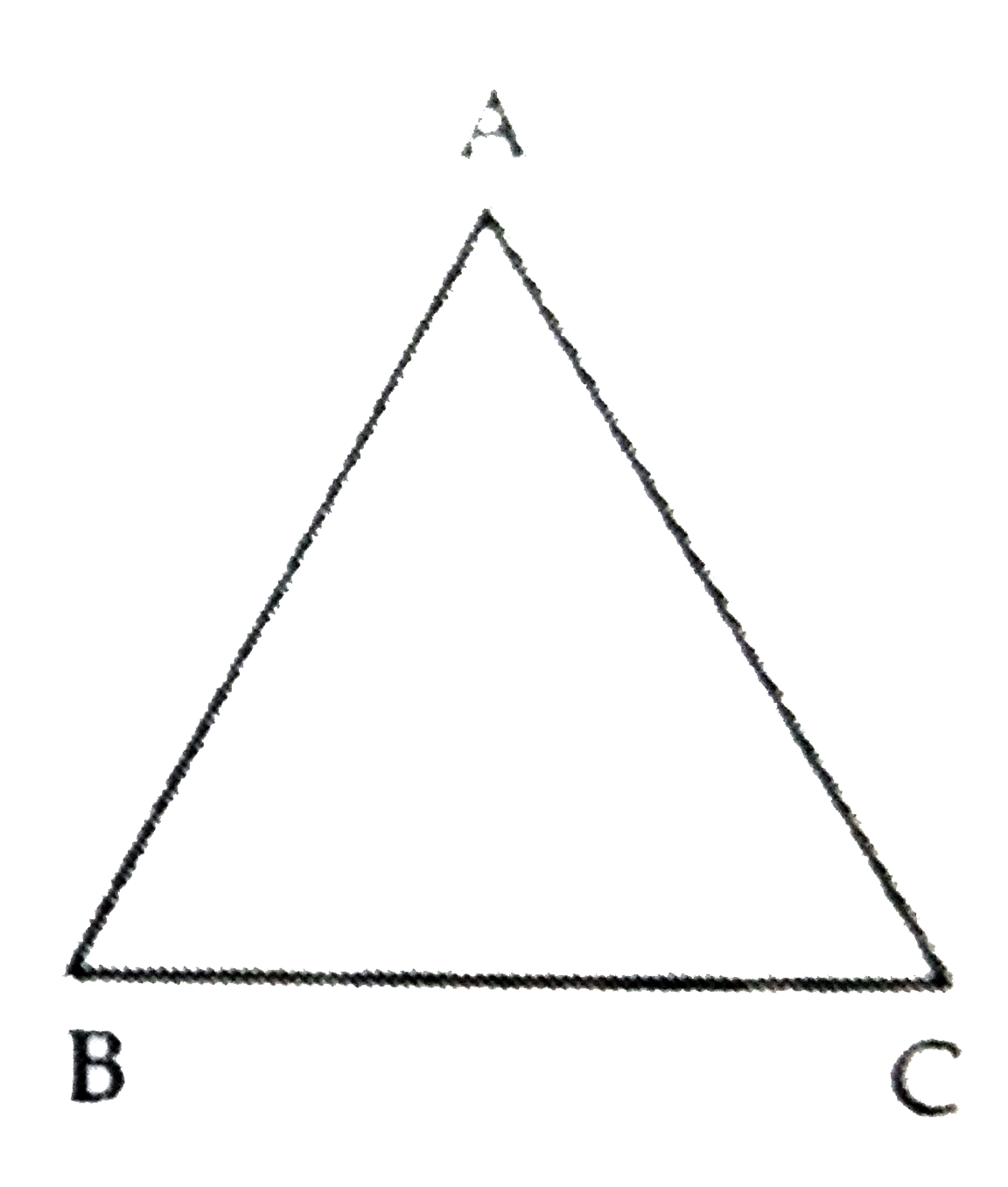A light is incident on face AB of an equilateral glass prism ABC. After refraction at AB, the ray is incident on face BC at the angle slightly greater than critical angle so that it gets reflected from face BC and finally emerges out from face AC. Net deviation angle of the ray is 112∘ anticlockwise. The angle of incidence 'i' has value:

22∘
24∘
26∘
28∘
The correct Answer is:C

Total deviation
=(i−r)+(180−2θc)+(1−r)=112∘
As r=60−θc
2i−120+2θc+180−2θc=112∘
⇒2i=52∘
i=26∘.
Topper's Solved these Questions
- DAILY PRACTICE PROBLEMBook:RESONANCEChapter:DAILY PRACTICE PROBLEMExercise:DPP No.12
Explore 9 Videos
- DAILY PRACTICE PROBLEMBook:RESONANCEChapter:DAILY PRACTICE PROBLEMExercise:DPP No.13
Explore 20 Videos
- DAILY PRACTICE PROBLEMBook:RESONANCEChapter:DAILY PRACTICE PROBLEMExercise:DPP No.10
Explore 9 Videos
- CURRENT ELECTRICITYBook:RESONANCEChapter:CURRENT ELECTRICITYExercise:High Level Problems (HIP)
Explore 21 Videos
- ELECTRO MAGNETIC WAVESBook:RESONANCEChapter:ELECTRO MAGNETIC WAVESExercise:Exercise 3
Explore 27 Videos
Similar Questions
The face AC of a prism ABC of refracting angle 30∘ is silvered . A ray is incident on face AB at an angle of 45∘ as shown in figure . The refracted ray undergoes reflection at face AC and retraces its path . The refractive index of the prism is

View Solution(i) A ray of light incident on face AB of an equilateral glass prism, shows minimum deviation of 30∘. Calculate the speed of the light through the prism.
(ii) Find the angle of incidence at face AB so that the emergent ray grazes along the face AC.

View Solution
Knowledge Check
A light ray is incident by grazing one of the face of a prism and after refraction ray does not emerge out, what should be the angle of prism while critical angle is C ?
AEqual to 2CBLess than 2CCMore than 2CDNone of the aboveA ray of light is incident normally on one face of an equilateral prism of refractive index 1.5. The angle of deviation is: (Given sin−1.23=42∘)
A30∘B45∘C60∘D75∘
A ray of light incident on one of the face of a prism as shown. After refraction through this surface ray is incident on base of the prism. The refractive index of the prism is √3. The net deviation of the ray due to prism isA60∘ clockwiseB104∘ clockwiseC104∘ anticlockwiseD166∘ clockwise
A ray of light PQ is incident on the face AB of an equilateral glass prism ABC as shown in the figure. Show that angle of emergence = angle of deviation. Also, with a ray diagram, trace the path of the emergent ray.

View SolutionIn the figure given below, a ray of light PQ is incident normally on one face AB of an equilateral glass prism. What are the angles at faces AB and AC?

View SolutionIn the above example, find the angle of incidence at face AB, so that emergent ray grazes along the face AC'.
View SolutionThe path of a ray of light passing through an equilateral glass prism ABC is shown in figure. The ray of light is incident on face BC at the critical angle for just total internal reflection. The total internal reflection. The total angle of deviation after the refraction at face AC is 108∘. Calculate the refractive index of the glass.

View SolutionA ray of light incident normally on the first face of a glass prism of refractive index 1.6 just emerges from the other face. Find the angle of the prism.
View Solution